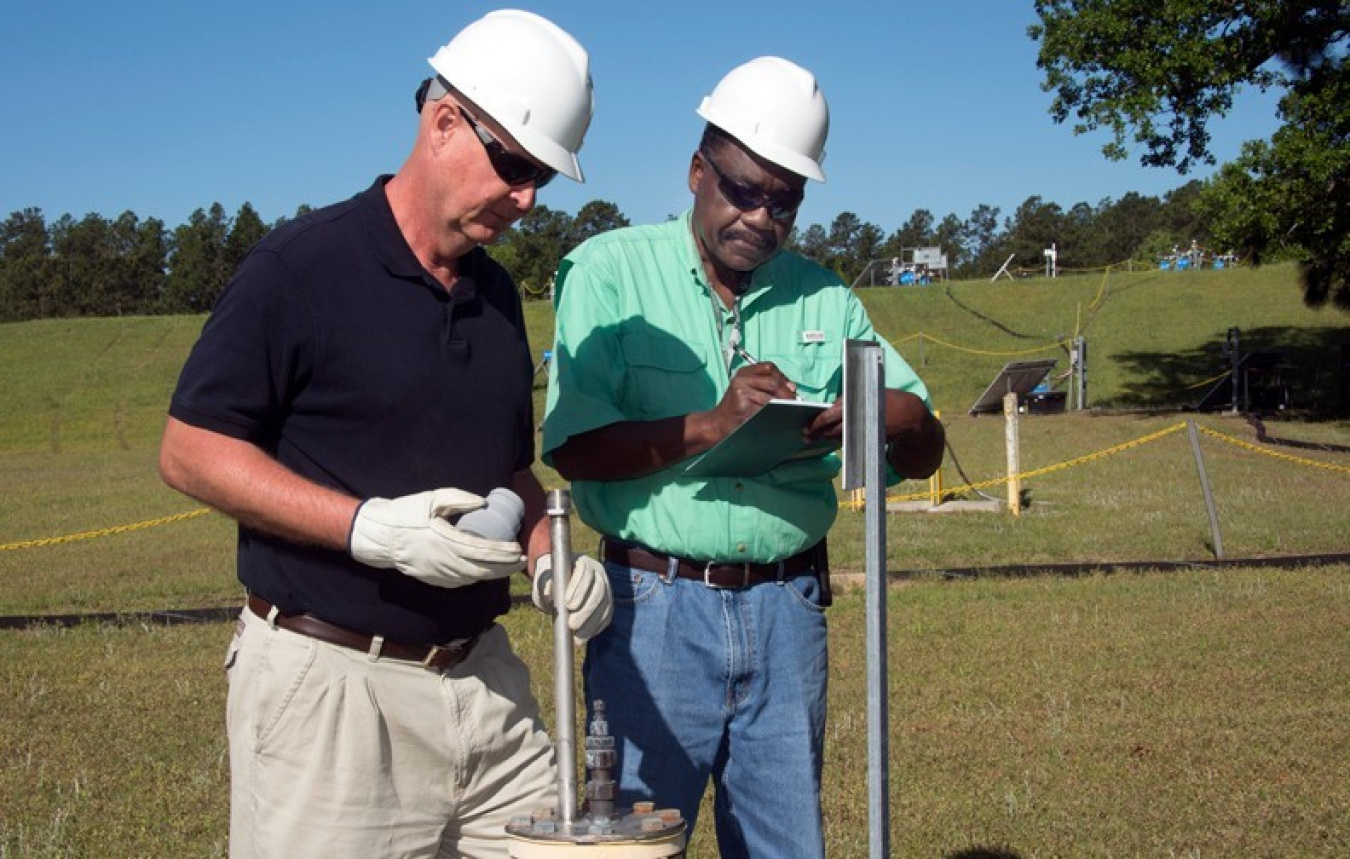In the 10 years since Savannah River Nuclear Solutions (SRNS) began managing groundwater remediation at the Savannah River Site (SRS)...
June 15, 2018In the 10 years since Savannah River Nuclear Solutions (SRNS) began managing groundwater remediation at the Savannah River Site (SRS), the widespread implementation of more passive, energy efficient treatment technology has increased the effectiveness of the cleanup while saving millions of dollars each year.
Since 2008, more than 60,000 pounds of non-radioactive contaminants have been removed from the groundwater beneath SRS at a cost savings of more than $5 million, adding to the total of 1.6 million pounds of total nonradioactive material removed beneath SRS since the initiation of site cleanup programs.
Likewise, SRNS has improved and expanded technologies to capture and manage radioactive contaminants in the subsurface as well, using underground barriers in F and H Areas to result in a cost avoidance of 90 percent as the annual cost has declined from about $12 million to $1 million. This was achieved by coupling the underground barriers with periodic injections of special materials to adjust groundwater chemistry and promote natural conditions where contaminants adhere to underground sediments.
“The cleanup of the groundwater at SRS is one of our most important missions,” SRNS President and CEO Stuart MacVean said. “We’ve been able to do more cleanup for less money and we’ve done it safely. This is a testament to both our partnership with DOE and our commitment to continuous improvement.”
An important part of the success of the SRS groundwater cleanup program over the last decade has involved implementing a strategy to fully transition from active, highly mechanized systems to innovative, passive technologies requiring little or no electricity. Working in partnership with the Savannah River National Laboratory (SRNL), all but one of the active remedial systems still in place are projected to be phased out within five years.

“Early active groundwater cleanup projects at SRS concentrated on using more aggressive methods to separate and remove the contaminants from tens of millions of gallons of groundwater,” said Mike Griffith, Project Manager, SRNS Area Cleanup Projects. “Examples of active technologies include steam injection and air stripping, requiring the power of large electric pumps, support facilities and monitoring equipment.”
Once these “pump-and-treat” systems have effectively removed a high percentage of subsurface chemicals at SRS, passive remediation technology has been determined to be the more cost-effective means to complete the cleanup process.
The primary advantage for passive cleanup is best represented in its ability to harness natural properties to protect, manage and remediate groundwater.
Solar-powered soil vapor extraction units known as MicroBlowers are an example of passive cleanup. MicroBlowers are designed to generate a vacuum that exhausts contaminants from designated wells. Each unit requires only 20 and 40 watts of power, easily produced by a small solar panel.
Griffith explained that a single MicroBlower removed 234 pounds of volatile organic compounds from chemically contaminated subsurface at SRS during a 10-month test. Griffith added that SRNS would eventually like to rely primarily on a technology called BaroBalls™, which operate completely on natural changes in barometric pressure to pump contaminants from the subsurface.
“No energy is used and excellent results are obtained,” Griffith said. Another passive cleanup system being used at SRS is bioremediation, which relies on feeding naturally occurring microbes found in soil to accelerate the cleanup process. The microbial “bugs” eat contaminants covered with vegetable oil, oil that is injected into wells within an impacted area.
Cumulatively, these technologies are proving not only to be a cost-efficient means of reducing risk to human health and the environment, but also are shortening the time needed for site cleanup.
“Overall, we currently have 39 groundwater remediation systems operating at SRS,” said Karen Adams, DOE Infrastructure & Area Completion Division. “It’s a carefully researched, planned and comprehensive approach to environmental remediation at SRS we’d like to share across the DOE complex.”
Primary Media Contacts:
Savannah River Nuclear Solutions
DT Townsend
(803) 952-7566, lawrence.townsend@srs.gov
DOE Media Contact: Monte Volk
U.S. Department of Energy
(803) 952-8283, monte.volk@srs.gov

